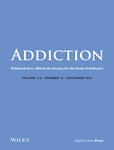Patient navigation (PN) may benefit pregnant individuals with opioid use disorder (OUD) by improving treatment adherence. We examined participant enrollment, session delivery and assessment feasibility for a PN intervention among pregnant participants and compared PN preliminary effectiveness for OUD treatment engagement with participants in usual care (UC).
This study was a pilot single-blinded multi-site randomized trial.
Two academic medical centers in Pennsylvania (n = 57) and Utah (n = 45), United States participated.
One hundred and two pregnant adult participants unestablished (fewer than 6 weeks) on medication for OUD (MOUD) were randomized to PN (n = 53) or UC (n = 49).
PN was composed of 10 prenatal sessions (delivered after baseline but before the prenatal assessments) and four postnatal sessions (delivered before the 2- and 6-month postpartum assessments) focused upon OUD treatment and physical/mental health needs. UC involved brief case management.
Feasibility assessments included consent, session delivery and assessment rates. Mixed-effect models for intent-to-treat (ITT) and per protocol (PP, received six or more sessions) populations were estimated to compare outcomes of MOUD use, secondary outcomes of substance use disorder (SUD) treatment attendance and non-prescribed opioid use, and exploratory outcome of overdose at baseline, predelivery and 2 and 6 months postpartum.
We consented 87% (106 of 122) of the proposed target, delivered ~60% of sessions delivered and completed ≥ 75% assessments. PN ITT and PP had better MOUD adherence, SUD treatment attendance, non-prescribed opioid use and overdose outcomes than UC. Notable changes included good evidence for greater percentage change in days for PN PP MOUD use from baseline to 2 months postpartum [PN = 28.0 versus UC = −10.9, 95% confidence interval (CI) = 9.7, 62.1] and some evidence for baseline to 6 months postpartum (PN = 45.4 versus UC = 23.4, 95% CI = −0.7, 48.2). PN PP percentage change in days for SUD treatment attendance also showed good evidence for improvements from baseline to prenatal assessment (PN = 7.4 versus UC = −21.3, 95% CI = 3.3, 53.5). PN compared to UC participants reported fewer overdoses at 2 months (PN = 11.9%/UC = 16.1%) and at 6 months postpartum (PN = 3.8%/UC = 6.2%).
Patient navigation appears to be associated with improvements in opioid use disorder treatment engagement and overdoses during pregnancy. This pilot trial shows the feasibility of the intervention and a future large-scale trial.


